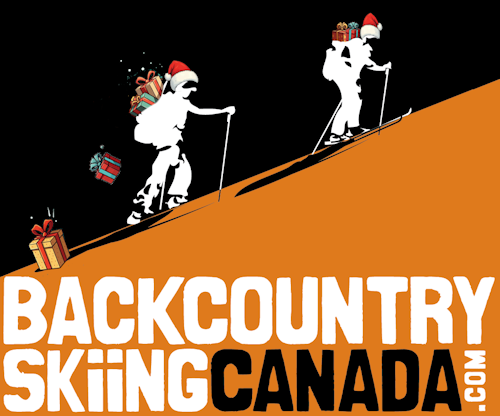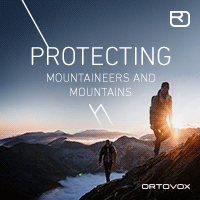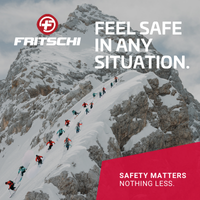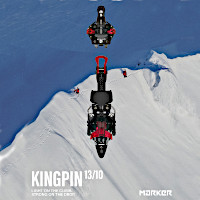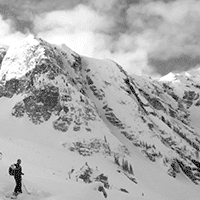Avalanche Conditions Report - VIDEO
Watch the latest Avalanche Conditions Report before you head out into the backcountry as there are several things you need to know about this diurnal snowpack that may affect your decision making and safety. A diurnal cycle generally occurs in spring and consists of warming from solar radiation and increased air temperatures during the day. At night things cool off as solar radiation stops and the air temperature cools. This is referred to as a melt-freeze cycle and can have several effects on the snowpack and its stability.Some things to keep in mind about melt freeze cycles from Avalanche Canada:
Snowpack
Melt-freeze cycles create a spring snowpack that consists of increasingly strong crusts on the surface of the snow and dense snow below the crusts. Once the process has progressed through a number of cycles, the combination of strong crusts and dense underlying snow becomes supportive when frozen, wet and slushy when melted, and that much sought after corn snow in between.
As the name suggests, daily melt-freeze cycles are dynamic, and the snowpack will change dramatically throughout a 24-hour period. In the frozen state, supportive crusts (usually at least 10 cm thick or more) “lock” the snowpack in place, making avalanches unlikely. Travel will be sketchy on the extremely hard, smooth, icy surface.
As things heat up throughout the day, the frozen surface softens and a thin layer of wet, slushy snow on the very top creates a condition referred to as corn snow, a much sought after condition that creates a smooth, silky ride.
At some point, the timing of which varies depending on aspect, elevation, and temperatures, the supportive crusts break down and the upper layers of the snowpack become saturated with water. Riding conditions deteriorate and the door is now open for a variety of instabilities to become active in the upper snowpack. The extent to which this deeper and broader destabilization of the snowpack occurs is a function of how thick and supportive the new surface crust is, the temperature and density of the snow below the crust, and how warm and sunny the next day is.
If melt water percolates deeper into the snowpack, it can activate persistent weaknesses such as older crusts, deeply buried weak layers from mid-season, or even deeper weaknesses lingering at the base of the snowpack. Cornices also become weak with daytime warming.
Avalanche Activity
When a thick, melt-freeze surface crust is present, avalanche activity is unlikely. As temperatures rise throughout the day and surfaces become wet or slushy and weak, loose wet avalanches become the primary concern, particularly on steep, solar aspects where the effect of the sun is strongest, or in lower elevation terrain where temperatures are usually warmer.
If solar radiation is strong and freezing levels are high, it’s possible for melt water to penetrate deeper into the snowpack resulting in wet slab avalanches, often failing on deeper crust layers or other persistent weak layers or possibly even in basal layers at or near the ground. These highly destructive deep persistent avalanches are generally isolated and are most likely to be triggered as step-down avalanches initiated by surface avalanches or cornice falls.
Large cornice collapses may also occur and are a likely trigger for deep persistent releases.
Terrain and Travel Advice
- Be alert to conditions that change with elevation, aspect and time of day. Adjust your travel plans accordingly. On spring trips, early morning travel is often faster and safer so plan your day so you cross exposed slopes before daytime warming makes surfaces wet and weak.
- Aspect is a major player. As a general rule, south-east aspects are the first to destabilize followed by south, then south-west and finally west and even north-west late in the spring. Plan your trips with this scenario in mind.
- Changes can be rapid. Sometimes significant change is possible in a matter of minutes, certainly within an hour or two.
- Avoid sun-exposed slopes when the solar radiation is strong, especially if snow is moist or wet.
- Cornices become weak with daytime heating, so travel early on exposed slopes.
- It can take several hours for residual heat to escape from the snowpack and even if temperatures have started cooling and the sun has set, it’s possible for avalanche danger to remain elevated into the early evening hours. If you get caught out, make sure you wait until the surface begins to freeze before anticipating a decrease in danger.
This is our final Avalanche Conditions Report for the season but be sure to watch for more next season as we'll continue to produce these in conjunction with Whitewater Ski Resort in order to help keep you informed and safe.
